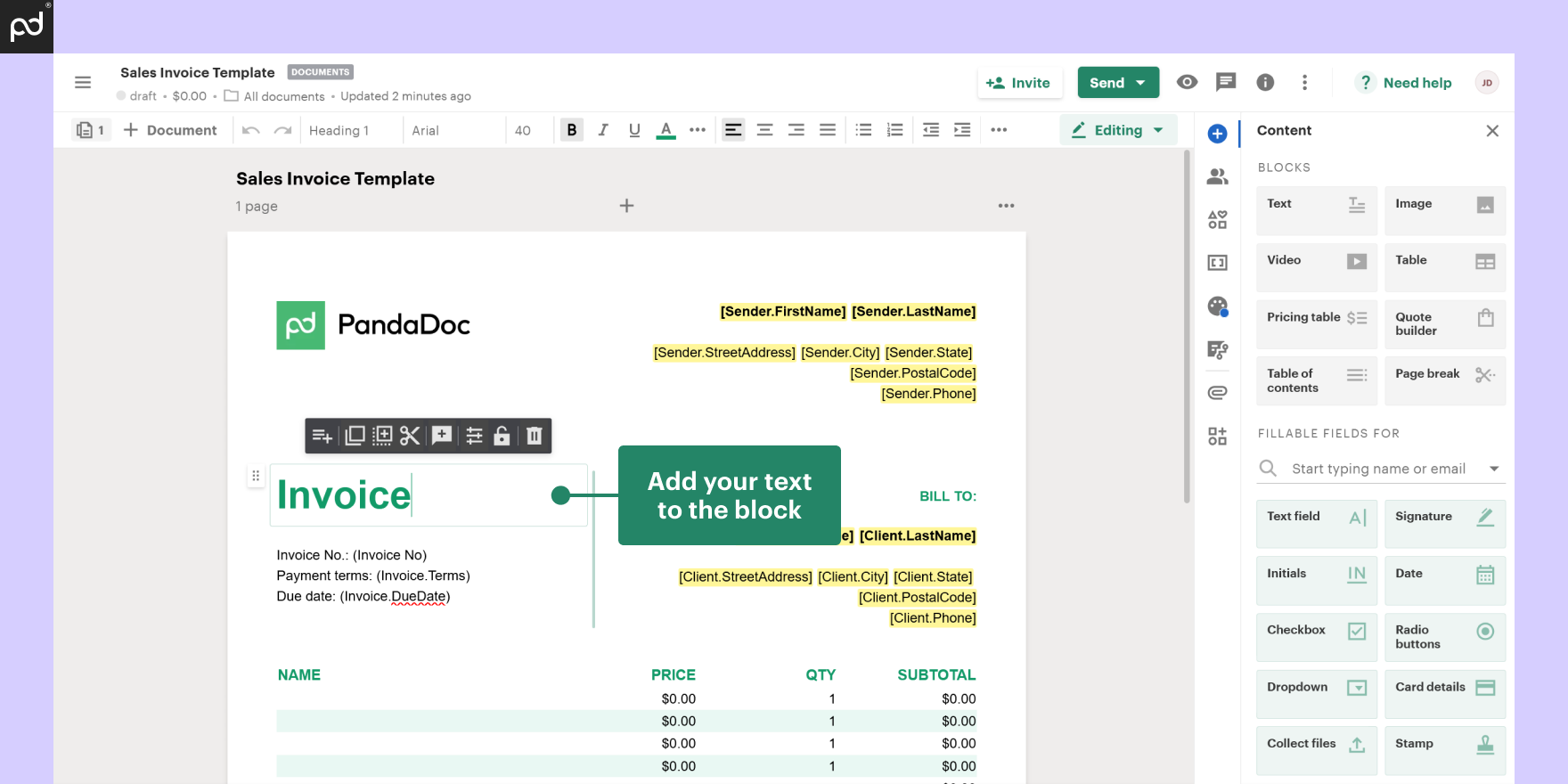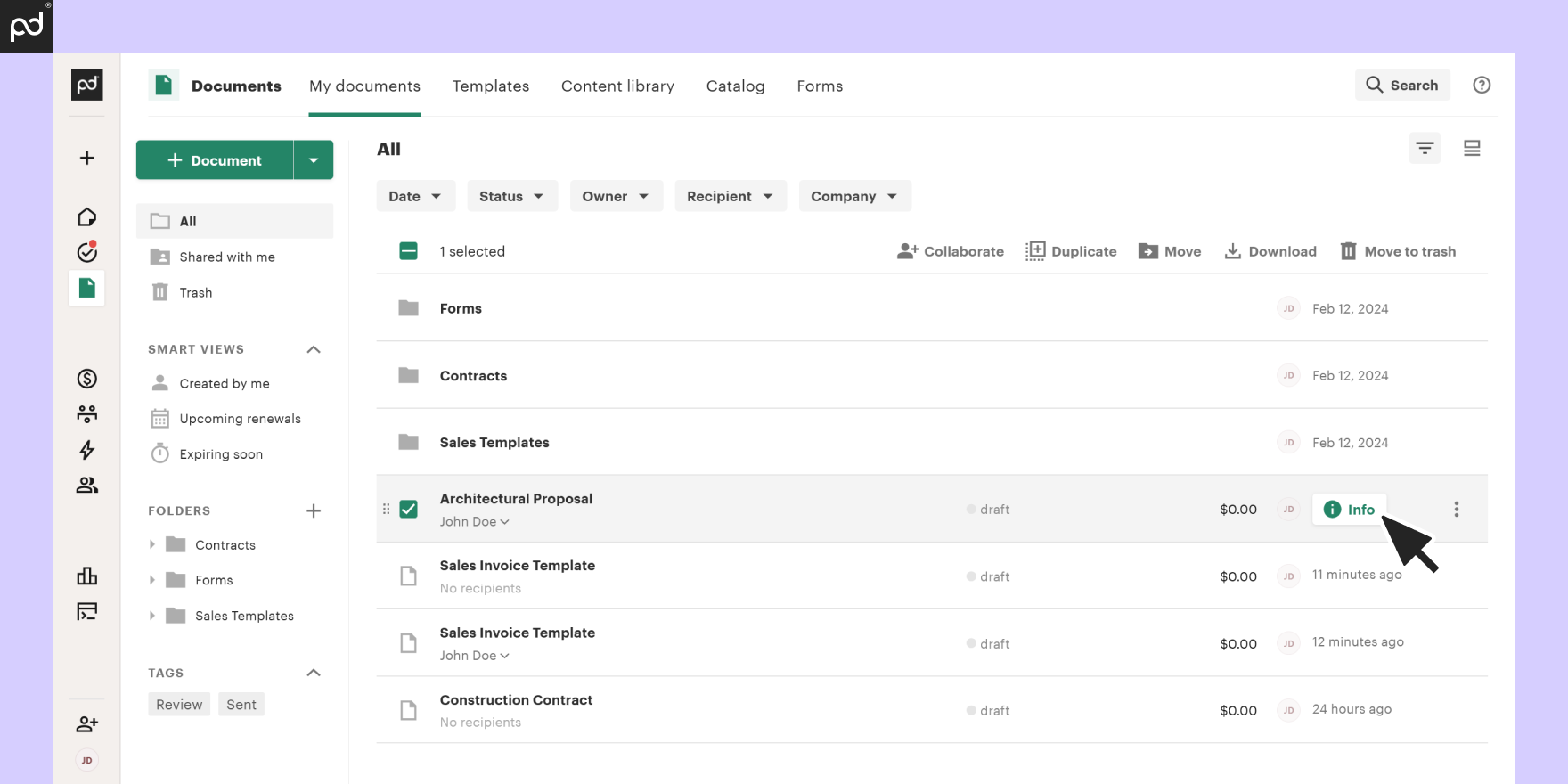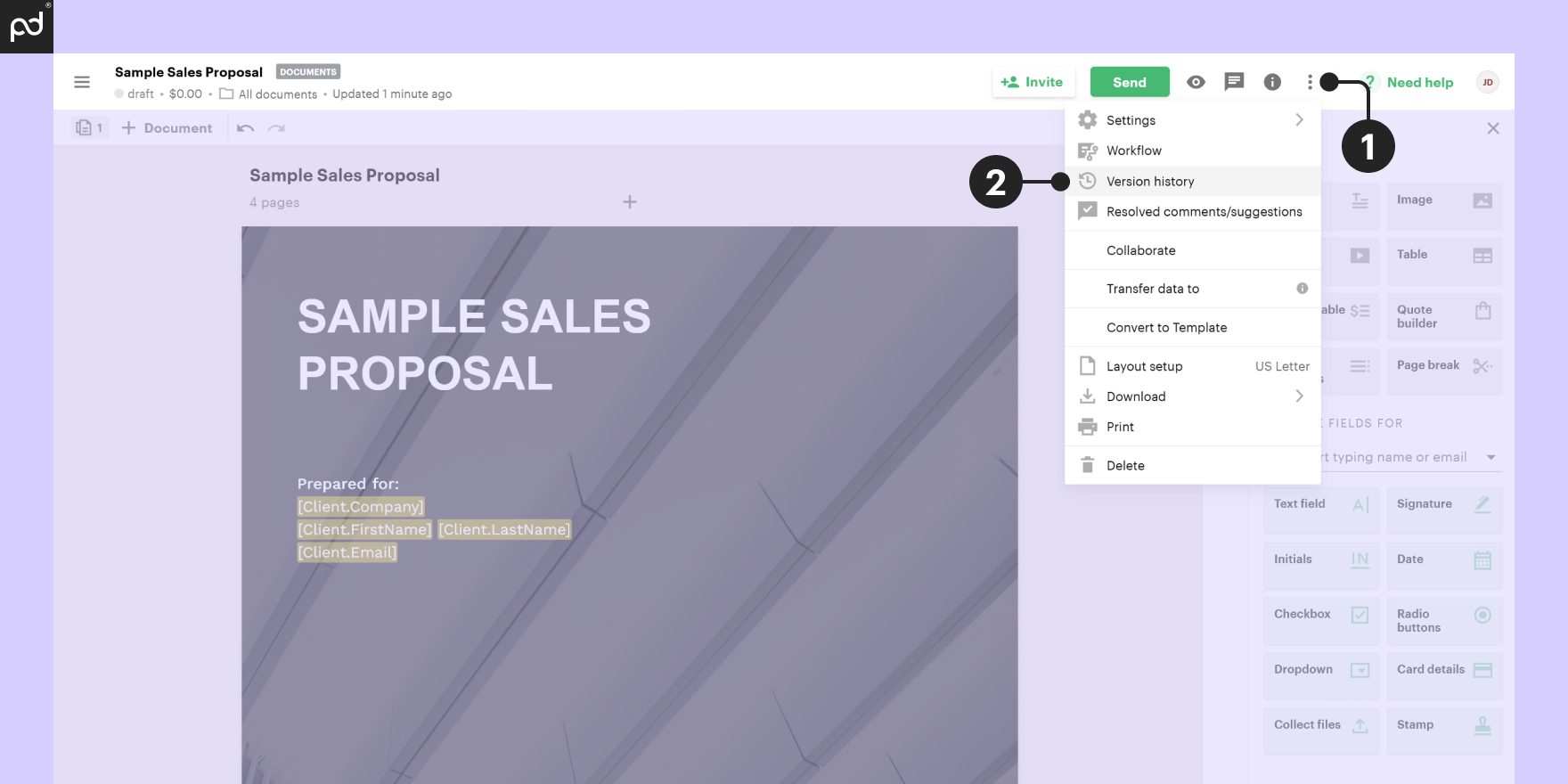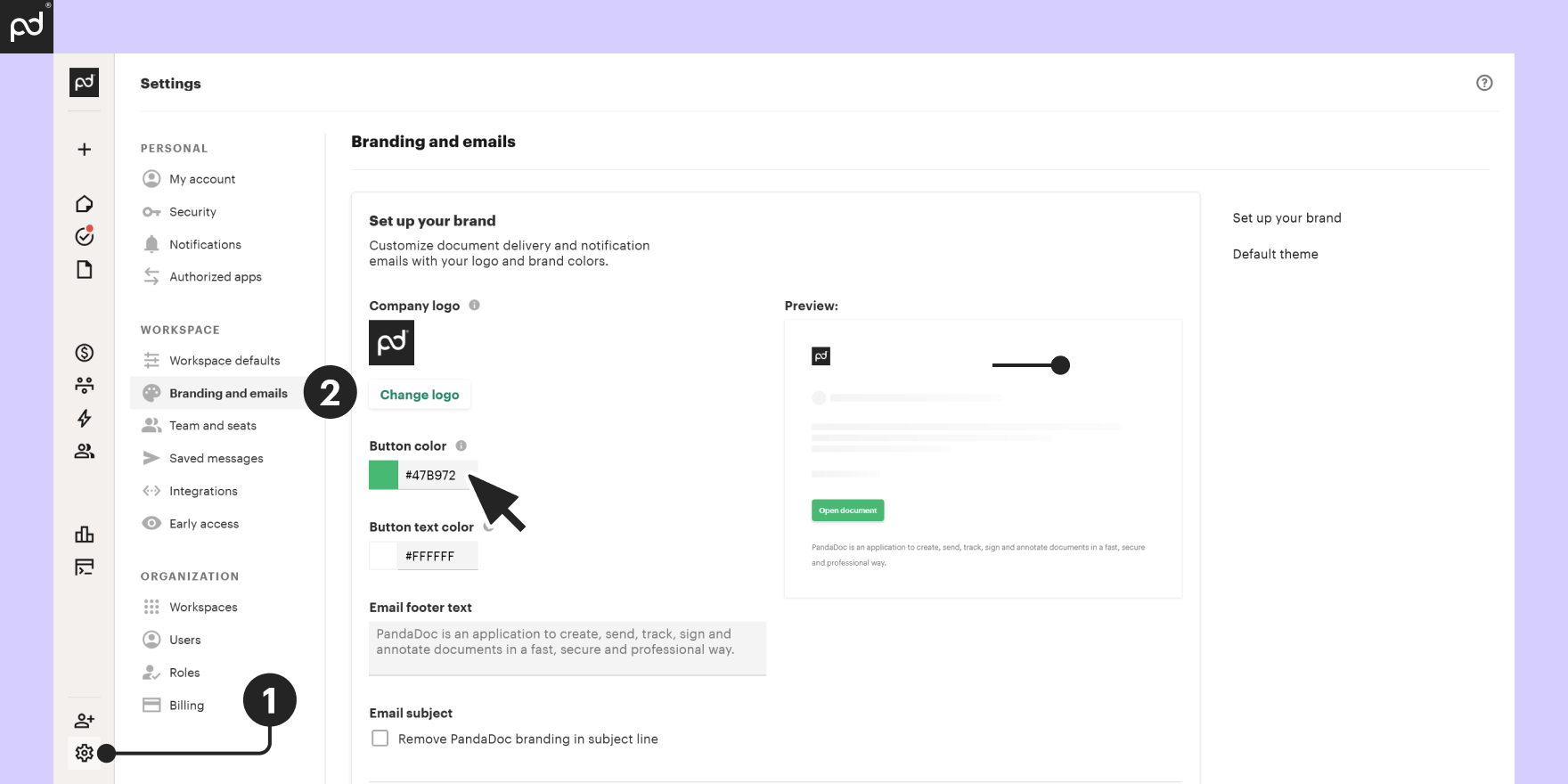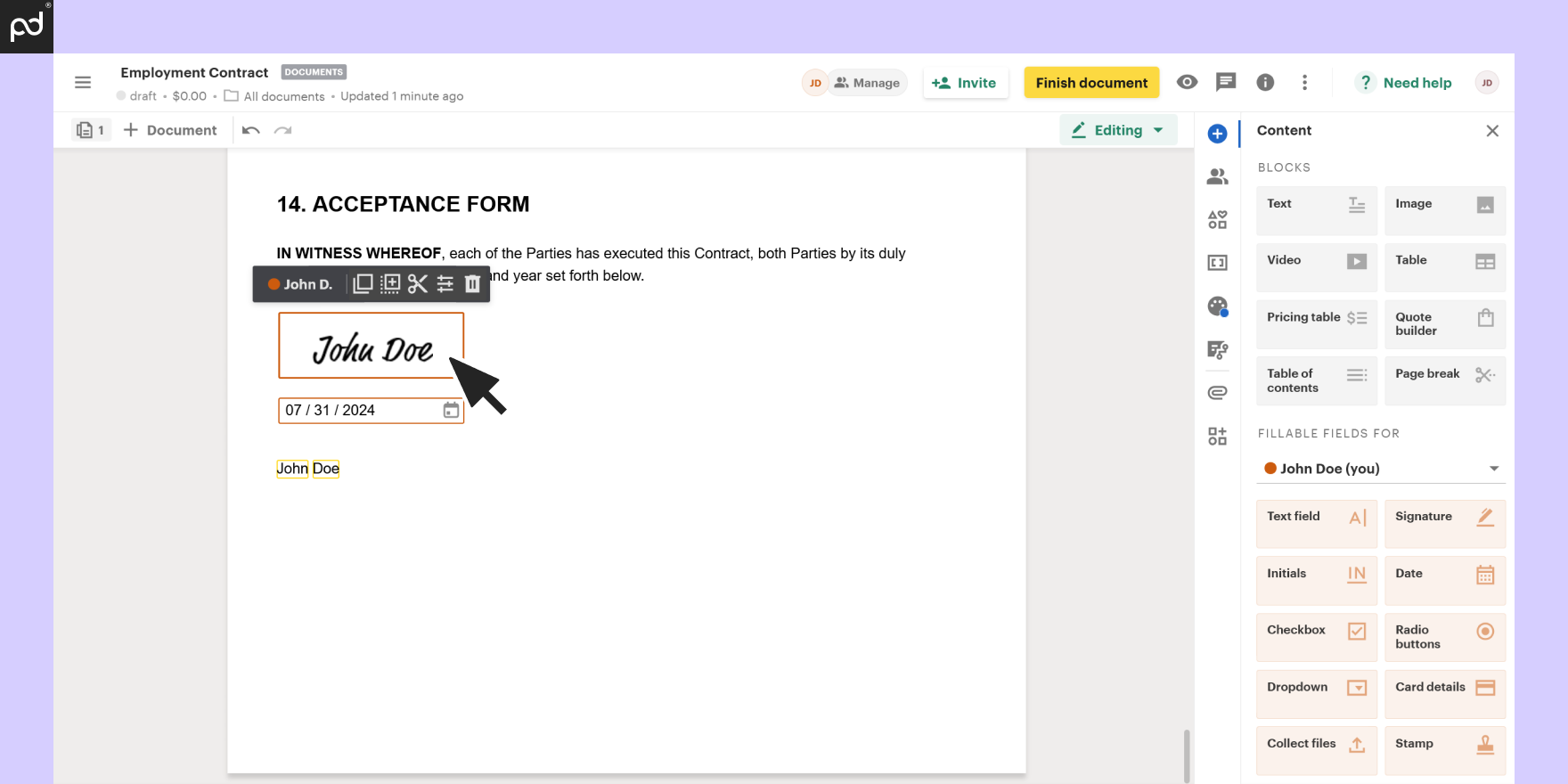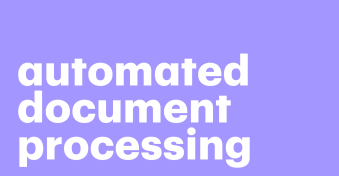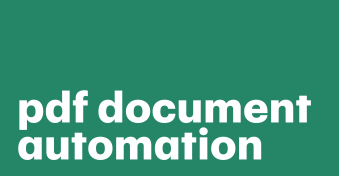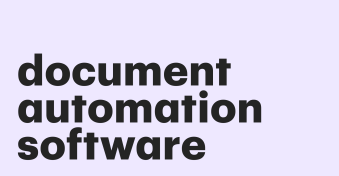Business process automation (BPA) uses technology to automate repetitive and/or repeatable document-related day-to-day tasks, such as data entry, document generation, filing, etc.
It also efficiently routes information to required specialists when a human touch is needed, such as during the review process for employee onboarding or seeking approvals prior to finalizing contracts.
BPA tackles both aspects efficiently through properly defined and managed workflows.
Read on to learn how to implement a business process automation strategy for you and your team!
Key takeaways
- Business process automation automates day-to-day tasks, boosting efficiency and reducing human errors.
- BPA integrates with various SaaS tools such as CRM, ERP, and communication platforms, facilitating seamless data flow and minimal manual entry.
- Automating workflows supports real-time co-editing, version control, and compliance with data encryption and audit trails.
How does business process document automation work?
Automating business processes works with the following components working in harmony: creating and managing docs, integrating with other SaaS tools, and streamlining workflows whenever possible.
Let’s look at these aspects in detail, with illustrative examples to show exactly what we mean.
Document creation & management
BPA is achieved through automatically generating, organizing, and storing documents. Key elements include:
- Pre-made templates: allow teams to quickly generate a range of documents, ensuring consistency and accuracy.
- Centralized storage: document management software securely keeps all documents in one place, enabling real-time and immediate access to all the data.
- Version control: track of document changes and updates.
- Customization and branding: ensure documents are tailored to specific scenarios and meet brand needs.
- E-signature software: enables quick and secure document signing without switching between apps.
Integrations
Integrating with other solutions accelerates a more seamless data flow and reduces manual data entry. These tools include:
Customer relationship management (CRM)
Integrating with CRMs like Salesforce, HubSpot, and Zoho automates the capture and management of customer data, streamlining lead tracking and customer engagement efforts.
Enterprise resource planning (ERP)
Integration with ERP systems such as SAP, Oracle ERP, and Microsoft Dynamics promotes seamless financial management and inventory control by automating data exchange between departments.
Project management tools
Tools like Asana, Trello, and Jira help in automating task assignments and progress tracking, enhancing team collaboration and project completion rates.
Communication platforms
Integrations with Slack, Microsoft Teams, and Zoom streamline team communication, allowing for quick updates and real-time collaboration on documents.
Marketing automation platforms
Connecting platforms like Mailchimp, Marketo, and HubSpot Marketing Hub automates marketing campaigns, improving lead nurturing and conversion rates.
Payment gateways
By integrating with gateways like PayPal, Stripe, or Square, you’ll simplify transaction or claims processing, and ensure secure and efficient handling of payments and financial records.
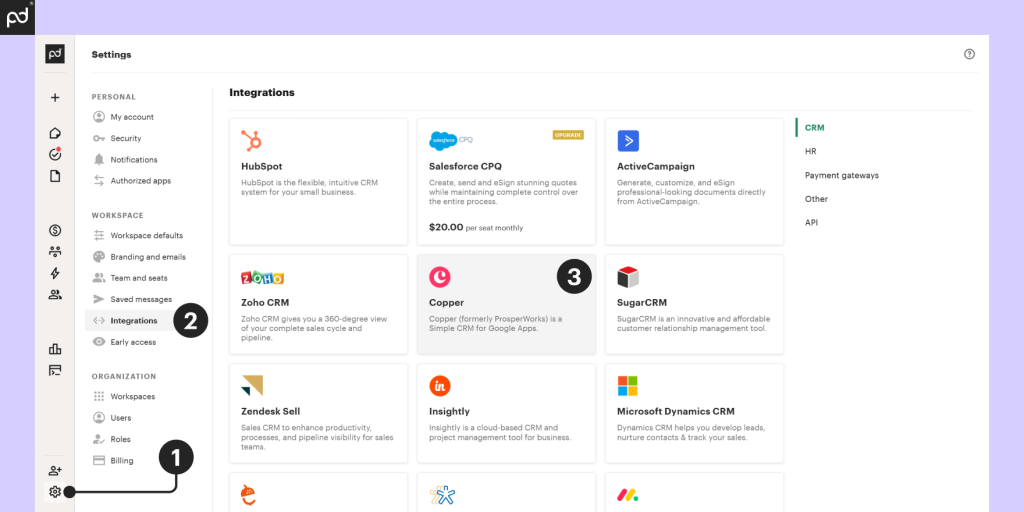
Workflow automation
Automating document workflows enables the orchestration of tasks and processes across various departments.
Allowing teams to design the route of all business processes, workflow automation includes:
Seamless collaboration
This enables multiple parties to work on the same document simultaneously.
Zooming out, BPA also assists in operations management, helping everyone meet project timelines and increase transparency through features like commenting, versioning, and access controls.
Repetitive task automation
These include data entry, document formatting, transcript requests, and report generation, spacing up time for higher-value tasks, and reducing human mistakes.
Approval process
Automating approvals keeps stakeholders updated on document status, staying informed whenever respondents open, view, or sign documents.
For example, purchase orders can be automatically routed to the appropriate departments for approval and processing, reducing delays and errors.
The ability to set up user roles and permissions helps easily control document workflow and improve data safety.
Compliance and security
This ensures all documentation adheres to regulatory requirements and industry standards through features like data encryption, access controls, and audit trails.

Steps to automate business processes and documentation
Automating business processes can significantly enhance efficiency, reduce errors, and streamline operations. Here’s a step-by-step approach for a successful transition:
Choose the strategy
Start by detailing the repetitive, time-consuming, and prone-to-error business processes that need automation. Move on to choosing the automation software based on your list of processes for automation.
We’ve gone over some of the most productive features you’ll want to consider when making a choice:
- Document creation, customization, and management
- E-signing and workflow approval
- Integration support
Gather input data
Data gathering specifics vary from team to team; however, there are some general parameters with respect to automating business processes:
- Data requirements: data needed for the automation to function, such as customer information, contracts, HR documents, product details, transaction details, etc.
- Data sources: choose where the data will come from. Data sources may include databases, forms, and integration tools like CRMs.
- Data quality: evaluate the quality of the existing data to avoid double handling of documents, errors, and issues that you want to avoid during the transition.
Visualize the workflow
Once everything is ready, visualize your new workflow and analyze how you intend for it to work with automation.
Flowcharts help map out the entire process visually, so try including each step, decision points, and conditional branches.
Onboard your team
Successful automation depends on how clear and effective the onboarding strategy is.
- Training programs. Create several training programs illustrating how to use the new automated system. These often mean hosting webinars and developing guides.
- Support resources. Develop and share user manuals and video tutorials that can be viewed at any time, and provide easy access to the support team, if you have one.
- Feedback evaluation. Ask employees to leave their feedback at intervals like a week, two, and a month after the system implementation so you can make necessary adjustments.
Say goodbye to errors and hours spent on manual tasks
In the fast-paced business world with millions of to-dos, automating your workflow is no longer a “nice-to-have” opportunity — it’s another task to solve so you can save hours each day and focus on other high-value work.
PandaDoc has the right software tools to automate your business processes and optimize all document workflows.
The platform offers a rich template library, digital signatures, and automatic alerts that keep you informed on renewal dates and document status at any given time.
Take the first step toward solving your automation tasks by requesting a demo.
Disclaimer
PandaDoc is not a law firm, or a substitute for an attorney or law firm. This page is not intended to and does not provide legal advice. Should you have legal questions on the validity of e-signatures or digital signatures and the enforceability thereof, please consult with an attorney or law firm. Use of PandaDoc services are governed by our Terms of Use and Privacy Policy.
